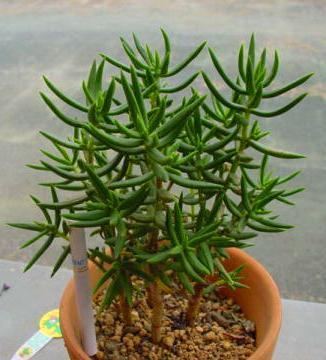Genus Crassula Rank Species | ||
 | ||
Similar Crassula muscosa, Crassula rupestris, Crassula perforata, Crassula arborescens, Crassula falcata | ||
Crassula tetragona mini pine tree
Crassula tetragona is a succulent plant native to Southern Africa. It is widely distributed from the Orange River boundary of Namaqualand to beyond the Kei River in the Eastern Cape. "Tetragona" comes from the phyllotaxy of the leaves. It is popularly named the "miniature pine tree" among ornamental plant enthusiasts, for its popular use as a "pine tree" in Bonsai.
Contents
- Crassula tetragona mini pine tree
- Crassula tetragona crecida en cemento hd
- Habit and general description
- Growth patterns
- References
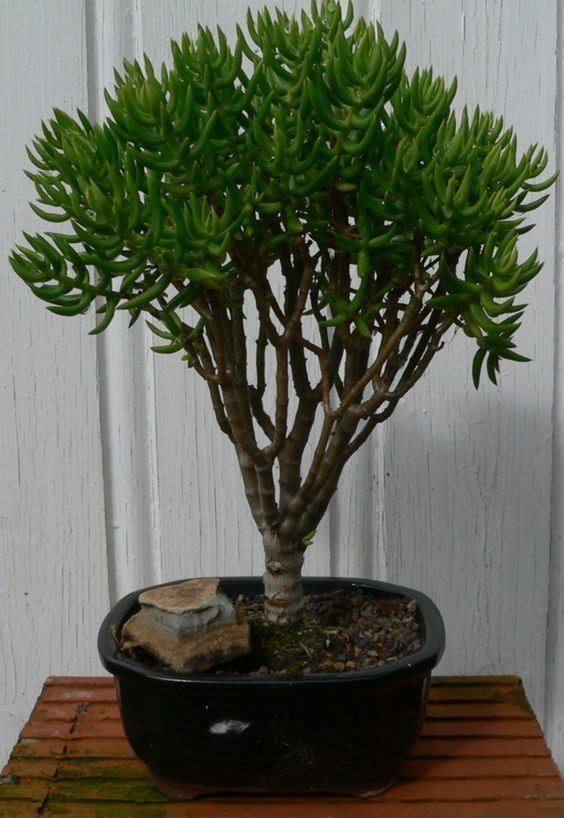
Crassula tetragona crecida en cemento hd
Habit and general description

The plant is erect or spreads shrubless to 1 m (3 ft). It has woody stems with brown bark, with crossed pairs of leaves. Leaves are green to dark green in color. The plant features terminal inflorescence ending in white flowers that come up in summer. The chromosome number varies: 2n=16, 32, 48.
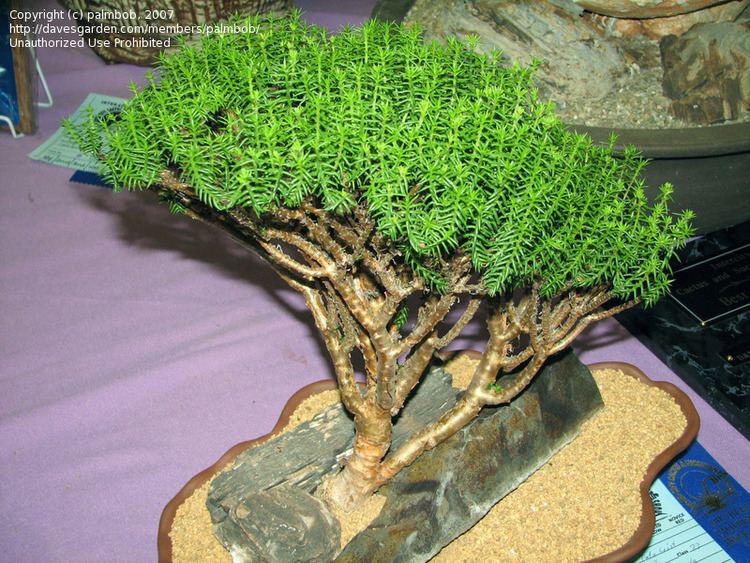
The species was first described by Linnaeus in 1753 in his book Species Plantarum There are six recognized subspecies, originally named by Tolken, as follows:
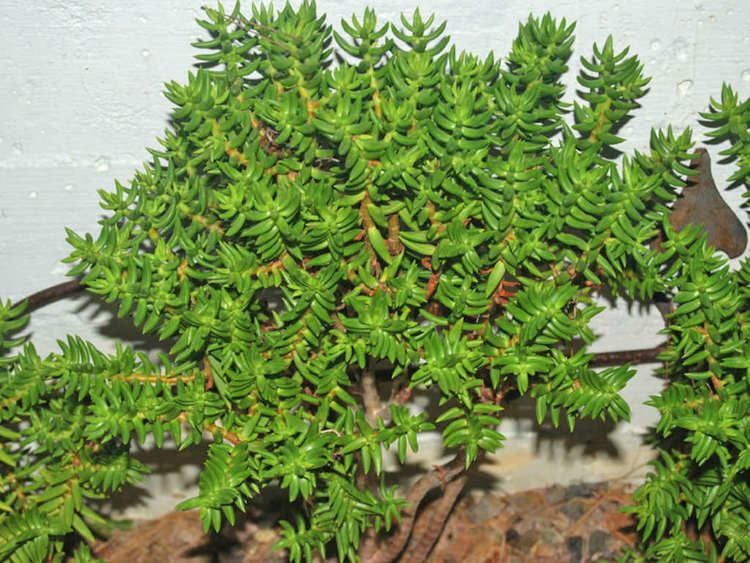
The subspecies are separated geographically, generally with only one subspecies per geographic area.
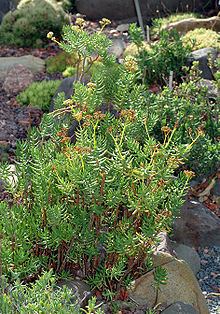
These plants are usually used as an ornamental, although they are believed to have been used as a medicinal plant by Thunberg, who wrote: "Crassula tetragona, somewhat of an stringent nature, boiled in milk, in the quantity of a handful, is used as a remedy for diarrhoea."
Growth patterns
The plant requires a reasonable amount of water; more water is needed if flower buds are present. Most species prefer full sun, although some sub-species could be sensitive to too much sun. The plant is resistant to frost, but temperatures above 40 °F (4 °C) (6C) are best. The plant may be propagated from leaves and cuttings. It does not suffer from pests, other than the occasional mealy bug.
